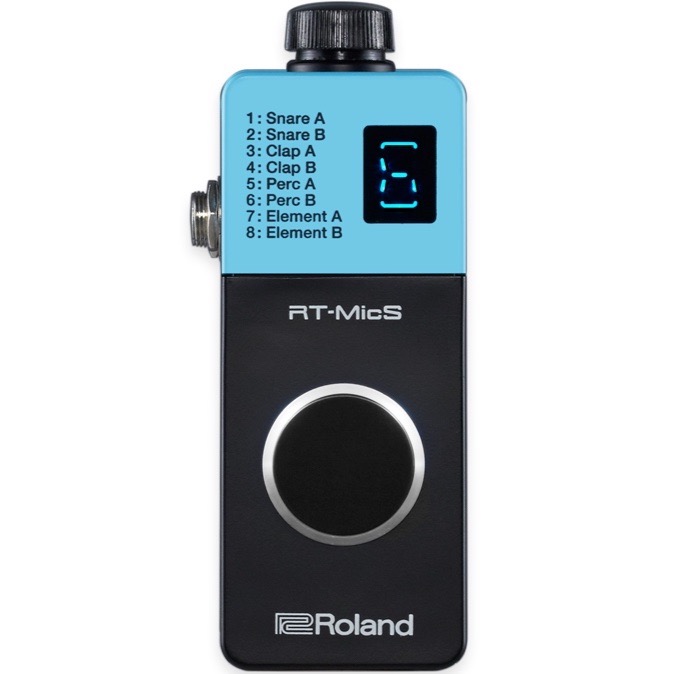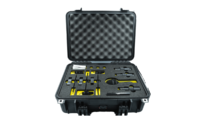All drummers and drum maniacs know Roland’s contribution to the development of electronic drums (currently also hybrid drums), and realize that products available under the company’s logo are synonymous with innovativeness, ingenuity as well as excellent quality, and have won numerous industry awards exactly for these reasons. Let us only mention such classic and/or breakthrough products as: CR-78, TR-606, TR-808 and TR-909 drum machines, SPD-S and SPD-SX samplers, or currently very popular TM-2, TD-50, TD-30, TD-25, TD-17, TM-6 PRO modules (let alone synthesizers, keyboards, guitar effects and amps).
We have recently received the RT-MicS module from Roland. Will it become one of the company’s flag ship products? Time will tell. Is it as good as the devices we mentioned above (not only those)? Let’s see…
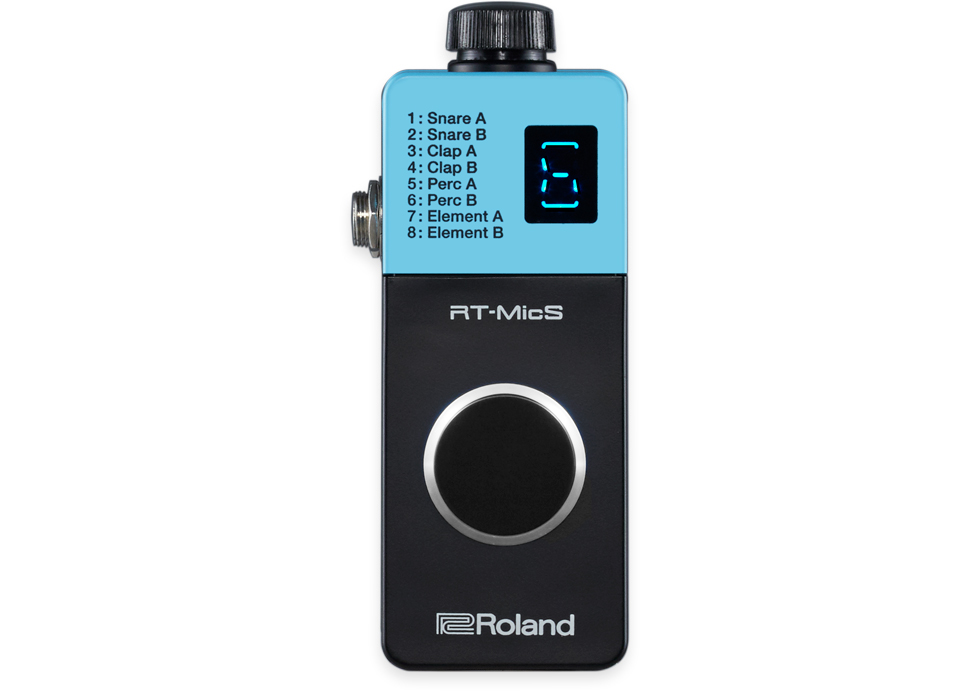
(Photo: roland.com)
Roland RT-MicS Hybrid Drum Module
1. Test
The test was carried out in our own recording facility. We also used a Tamburo maple piccolo snare drum with an Aquarian Texture Coated head on. In the course of our test, we will present all the preset sounds the device is equipped with (isolated and mixed with acoustic sound), the mic sound, as well as all the functionalities (mute, sensitivity, replacing the built-in presets with those made by the user – by sending wave files).
2. Basic specification of the device tested:
- Manufacturer: Roland
- Model: RT-MicS
- Device type: Drum module
- Dimensions: 50 mm (width), 158 mm (depth), 162 mm (height)
- Weight: 400 g (including the battery)
- Record/playback: WAV (44.1 kHz, 16 bit, stereo) / WAV, AIFF, MP3, AAC, Apple Lossless
- Microphone: Yes
- Number of in-built samples: 8
- Sound length: 10 seconds per sample
- Connectors: USB Micro-B, jack 1/4″ (2 pcs.), DC IN
- Adaptor: BOSS PSA lub PSA-S
- Battery: 9V
- Microphone: Yes
- Connector cables and adaptor included: No
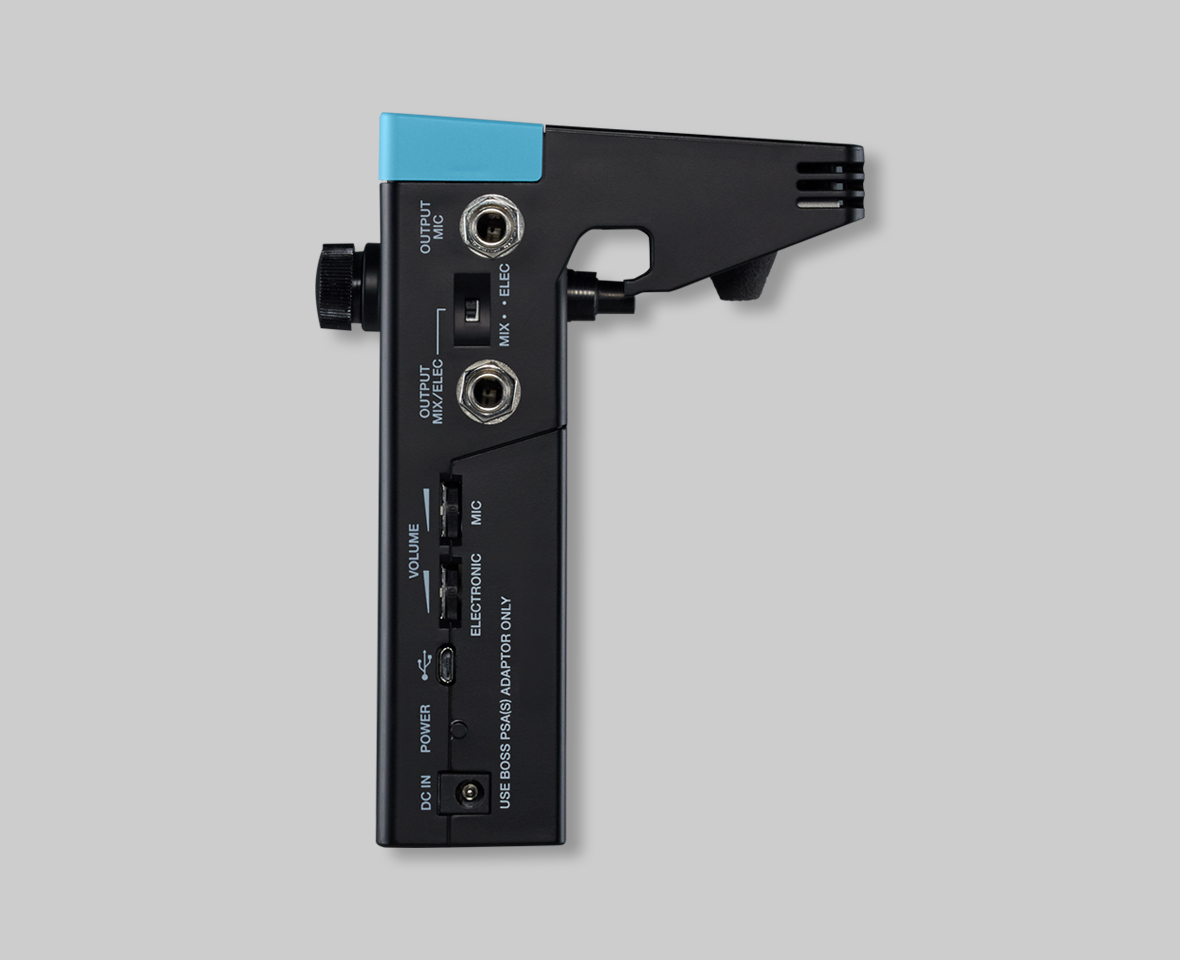
(Photo: roland.com)
3. The product
Roland RT-Mics is basically a trigger with a built-in acoustic microphone with a sound generator. This means it also functions as a small drum module which is supposed to easily and effortlessly turn our acoustic kits into hybrid ones – no cables entwined, no need to dig deep into an encyclopedia-thick instruction manual.
Mounting the unit to a hoop is intuitive and completely hassle-free. It can be easily and securely attached to snare drums that use a variety of differently-shaped hoops except wooden ones. While pressing the trigger firmly against the drum head, use the mounting screw to secure it. The unit sits firmly and there are no loose elements. NOTE: To obtain maximum detection of drum head vibrations, the device should be mounted between two tension rods.
How is the module operated? it is not a big problem. Here are the functionalities of the Roland RT-Mics:
-
-
- POWER button activates the device
- OUTPUT MIC connector to communicate with an amp (a 1/4″ jack connector cable on both ends – not included)
- OUTPUT MIX/ELEC connector to communicate with a mixer (a 1/4″ jack connector cable on both ends – not included)
- MIC VOLUME dial adjusts microphone volume
- ELECTRONIC VOLUME dial adjusts buil-in sound volume
- SENS dial adjusts sensitivity (reacts to the most subtle ghost notes)
- SOUND switch to select electronic sounds
- Eight electronic sounds to choose from (Snare A, Snare B, Clap A, Clap B, Perc A, Perc B, Element A, Element B)
- You can trigger electronic sounds by striking your drum (built-in sound generator)
- You can mix the drum’s own acoustic sound (mic sound) with the electronic sound, or output them separately
- Using dedicated software, the built-in sounds can be replaced with audio les (wave data) that you create on your computer. The dedicated software (RT-MicS Wave Sender) can be downloaded from http://www.roland.com/support/. Before you load the replacement sounds, process them so that they are at a sufficient volume. Otherwise they will be obscured by acoustic drums.
- The device operates either on a 9V battery or a BOSS PSA or PSA-S adaptor, which are not included.
-
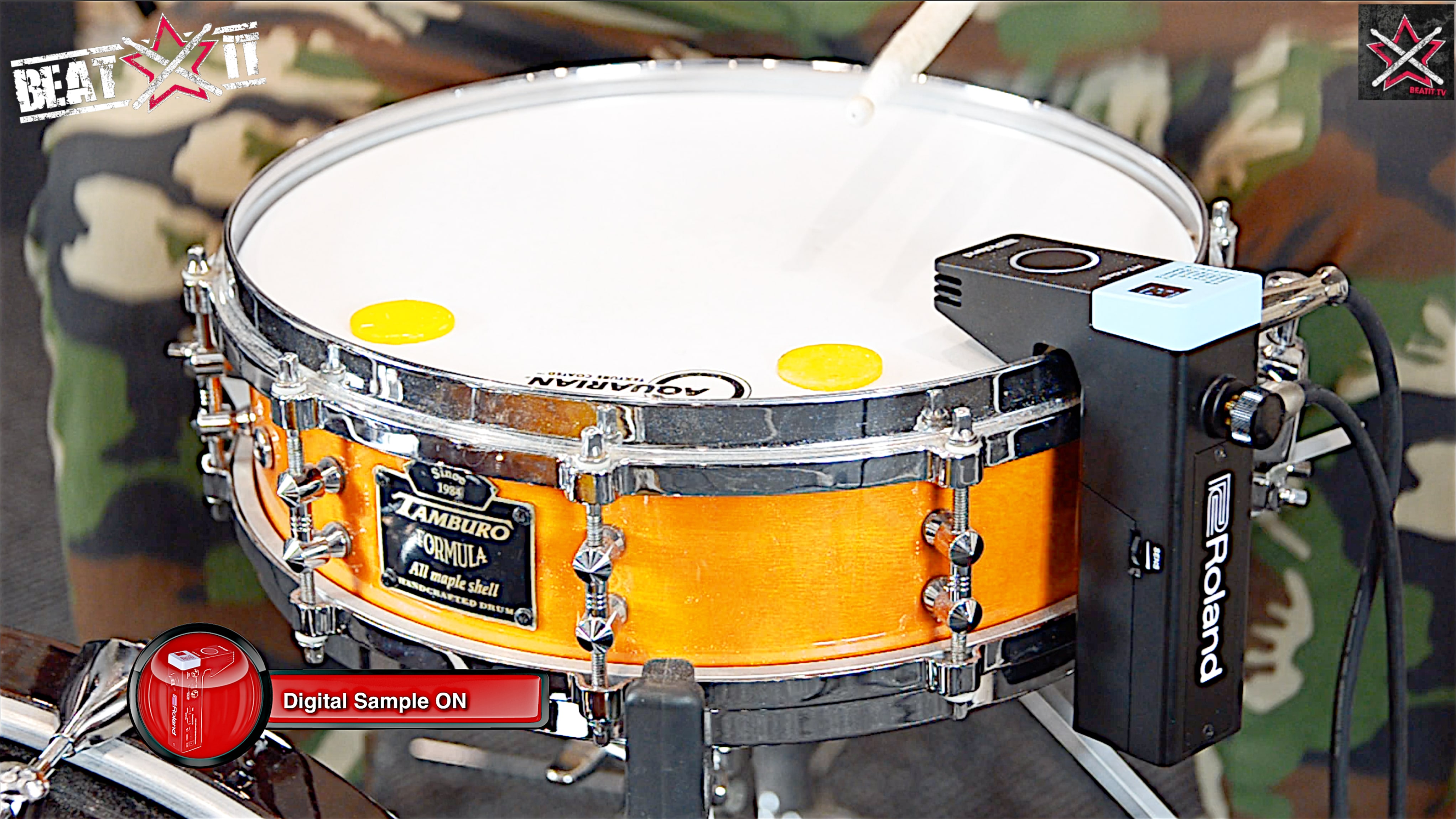
Left-side panel functions:
- OUTPUT MIC connector
- OUTPUT MIX/ELEC connector
- MIX/ELEC switch
- MIC VOLUME dial
- ELECTRONIC VOLUME dial
- Micro USB port
- DC IN connector
- POWER switch
Front panel functions:
- Display
- Sound button. A long press mutes the sound. The ring around the button blinks.
Right-side panel functions:
- SENS dial
The remaining features are: microphone, mounting screw and drum head sensor.
4. Summary
Roland RT-Mics is a very useful device when playing a gig in a small club, where there is no professional mixing desk with effects and compressors. In such case, we are able to make the snare drum sound good by using one of the built-in sounds, mixing one with the acoustic sound or triggering a sample we have made before. The instrument will sound the way we want it to. We would also like to point out that the trigger/module is equipped with a drum hoop sensor, which allows a player to trigger off a digital sound with the rim while playing an acoustic drum at the same time. Another advantage of this interesting product is the possibility to enhance our acoustic kit with an additional sampled sound (e. g. a hand clap) without having to buy a complicated module. Long story short: a device certainly worth looking into.
Manufacturer: Roland
Distributor in Poland: Roland Polska
OUR VERDICT: 5/5

Advantages:
- Hybrid drum kit effect
- Mixing digital samples with acoustic drum sound
- Drum hoop sensor
- User can replace built-in sounds with his/her own samples
- Saving on mics, mixer, compressors, triggers, stands
Disadvantages:
- None
Drummers and Drummerettes! It’s time to put the Roland RT-MicS drum module to our test, exclusively for en.beatit.tv viewers!
Share


